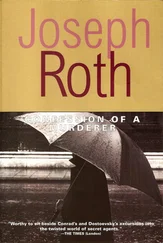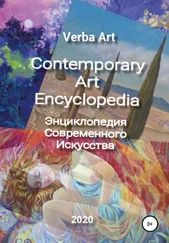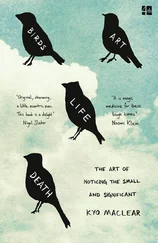Jose Somoza - Art of Murder
Здесь есть возможность читать онлайн «Jose Somoza - Art of Murder» весь текст электронной книги совершенно бесплатно (целиком полную версию без сокращений). В некоторых случаях можно слушать аудио, скачать через торрент в формате fb2 и присутствует краткое содержание. Жанр: Триллер, на английском языке. Описание произведения, (предисловие) а так же отзывы посетителей доступны на портале библиотеки ЛибКат.
- Название:Art of Murder
- Автор:
- Жанр:
- Год:неизвестен
- ISBN:нет данных
- Рейтинг книги:4 / 5. Голосов: 1
-
Избранное:Добавить в избранное
- Отзывы:
-
Ваша оценка:
- 80
- 1
- 2
- 3
- 4
- 5
Art of Murder: краткое содержание, описание и аннотация
Предлагаем к чтению аннотацию, описание, краткое содержание или предисловие (зависит от того, что написал сам автор книги «Art of Murder»). Если вы не нашли необходимую информацию о книге — напишите в комментариях, мы постараемся отыскать её.
Art of Murder — читать онлайн бесплатно полную книгу (весь текст) целиком
Ниже представлен текст книги, разбитый по страницам. Система сохранения места последней прочитанной страницы, позволяет с удобством читать онлайн бесплатно книгу «Art of Murder», без необходимости каждый раз заново искать на чём Вы остановились. Поставьте закладку, и сможете в любой момент перейти на страницу, на которой закончили чтение.
Интервал:
Закладка:
They left her on her own. She could hear them chatting unconcernedly out on the porch.
What did Uhl's exploration of her body mean? Was it a way of judging the texture of her skin? She did not think so. She had felt quite uncomfortable during his examination.
When the timer went off, Gerardo appeared in her line of vision once more. He was wearing a fresh pair of gloves, and picked up another tin of paint.
'Justus is the boss,' he whispered. 'He's a bit special, but you'll get used to him. Which one is it now? Oh yes, shade 36.'
At midday they called her to eat. A plastic tray like an airline one was on the kitchen table. On it was a chicken and salad sandwich, a yogurt, an Aroxen juice, and half a litre of mineral water. She ate alone – the other two had their meal out on the porch. She was barefoot and naked, with a palisade of twenty-five, flesh-coloured and numbered lines painted on her stomach. After a rapid visit to the bathroom, the afternoon went on with no breaks. They painted another forty lines, this time on her back. The calendar of a shipwrecked sailor. The last of them climbed the curve of her buttocks. They left, came back to study the effect, occasionally took photos. Clara tried to convince herself that all this was a preamble, that the following day things would be different. She could not allow herself to admit that her first day of work for the Foundation was disappointing.
At a certain point, it began to grow dark. She still hadn't seen the landscape around the house.
'Don't have a shower tonight or put anything on over the lines,' Gerardo warned her. 'Lie down on your back on the mattress with the timer beside you. It will go off every two hours. Each time it does, turn over, just like a Spanish omelette.'
'Aha, OK.' 'We'll be back early tomorrow morning.' 'Aha.'
Tour dinner is in the kitchen. And remember: when you hear the timer, over you go.' He gestured with his hands. 'Like an omelette.' 'That's right.'
Gerardo's eyes shone as he smiled at her. Uhl's voice called to him, and he hastily left the room.
It happened in the middle of the night, the second time the alarm went off.
Face down on the mattress, Clara woke from her light sleep. As she turned over, her eyes still unfocused, she realised the colour of the darkness was changing.
It was very rapid, no more than the blinking of an eye. She turned her head to look out of the bedroom window on her left. All she could see were shadows, the outlines of trees and branches, yet she was sure that an instant before those shadows had been different. She leaned up, pressing her elbows into the mattress. Held her breath. Listened intently. Was that footsteps she could hear, near the window? It was hard to know, because the wind was whipping the tree branches.
She searched the darkness with her gaze. She saw her naked legs, stretching out like two parallel lines. There were only three things in the bedroom: her, the timer, and the mattress. Behind her back, the timer was ticking off the seconds.
She stood up, and walked cautiously over to the window. It was completely dark outside. It's incredible how scary darkness like this can be in the middle of the countryside, she thought. Her skin wanted to pull on its body stocking of fear, but the primer made it impossible. The window was a world of black lines. She went up to it. For a fraction of a second, a monster with yellow features floated before her eyes – but she knew she was only seeing her own reflection, so was not startled.
There was nobody out there, or at least no one she could see. She listened. The wind rustled the branches.
She protected her body with her hands, and went back to the mattress. She lay down on her back. Her heart was pounding like a hammer in her ears.
She remembered the afternoon she had left her apartment to be primed. The feeling she had just had was like that earlier one, only much more intense.
She was sure someone had been looking in at her through the window just before the timer went off.
Someone who was outside the house, in the middle of the night, keeping watch on her.
3
The 'terrible' is in the circle.
Slowly, menacingly, the Monsters of the Haus der Kunst come back to life.
Tine girl floating in the glass swimming pool full of foul water is called Rita. She is the first to receive help, because she has to make a huge effort: spending six hours a day as organic waste with her hair caught up in plastic and excrement is no easy task. The work has been bought by a Swedish company, and the monthly rental has achieved the impossible: every day Rita dives into this amnion of shit and is happy to do so. In her time off she even manages to enjoy what might be called 'a social life' (although she complains that her hair smells). Now she is breathing deeply in the pool, waiting for the water level to go down. We cannot see her face, but we can see how her long legs wave in the water like pale white strands of seaweed.
And if she complains about her hair, she should spare a thought for Sylvie. Sylvie Gailor is Medusa, a painting valued at more than thirty million dollars, and with an astronomical monthly rent. This is because she has ten live snakes painted ultramarine-blue writhing around her head which have to be fed and replaced quite often. They are about the length of an adult hand, and are held in place by a delicate network of wires disguised as hair, which allows them to move their heads and tails. Snakes in general do not know much about art, so they get very nervous if we force them to put up with being clipped immobile for six hours a day. Some of them die on Sylvie's head; others thrash about despairingly. Ecological groups and animal protection societies have denounced the exhibit and protested outside the doors of the museums and galleries where it has been shown. All of them are well known to the organisers, and are a harmless minority compared to the people who protest against the other works in the collection. But nobody thinks of poor Sylvie. It's true she is well paid, but what can compensate for her insomnia, the strange repugnance she feels at combing her hair, the ghostly feeling she gets sometimes when she is talking, laughing, having dinner in a restaurant or making love, a feeling that someone is caressing her hair, pulling at her curls, scratching her head with nail-less fingers?
Ten metres behind Sylvie stands Hiro Nadei, an aged Japanese man painted in ochres, who holds a small jasmine flower in his right hand. Hiro is a real survivor of Hiroshima; he is sixty-six years old. When his city exploded in an atomic hell, he was five. He was in his back garden holding a jasmine in that same hand. Rescued almost unscathed from the ruins, the hardest thing was to get him to open his right hand, which was clenched like a fist. A month later, he let go: the flower was crushed beyond recognition. Two years ago, Van Tysch heard his story and called him to do a small painting. Mr Nadei was delighted: he is a widower, lives on his own, and wants to close the circle of his life dying as he should have done at that dreadful moment. The painting, entitled The Closed Hand, has been sold to an American. At the other end of the gallery, Kim, a young Filipino, is in the last stages of AIDS. He is on show lying in bed painted deathly grey, with an intravenous drip stuck like a skewer in his shrivelled arm. He has difficulty breathing, and occasionally has to be given oxygen. He is the sixteenth substitute for a work whose continuing existence makes it art: a painting which lasts as long as human tragedy. Of course, he is not doing it for the money. Like all his predecessors, Kim wants to die as a work of art. He wants his death to have a meaning. He wants to make the work last, precisely so that it will not last. Stein has found a brilliant phrase to describe it (he is very good at that kind of thing): Terminal Phase is the first painting in the history of art which will be beautiful only after it ceases to exist.
Читать дальшеИнтервал:
Закладка:
Похожие книги на «Art of Murder»
Представляем Вашему вниманию похожие книги на «Art of Murder» списком для выбора. Мы отобрали схожую по названию и смыслу литературу в надежде предоставить читателям больше вариантов отыскать новые, интересные, ещё непрочитанные произведения.
Обсуждение, отзывы о книге «Art of Murder» и просто собственные мнения читателей. Оставьте ваши комментарии, напишите, что Вы думаете о произведении, его смысле или главных героях. Укажите что конкретно понравилось, а что нет, и почему Вы так считаете.












